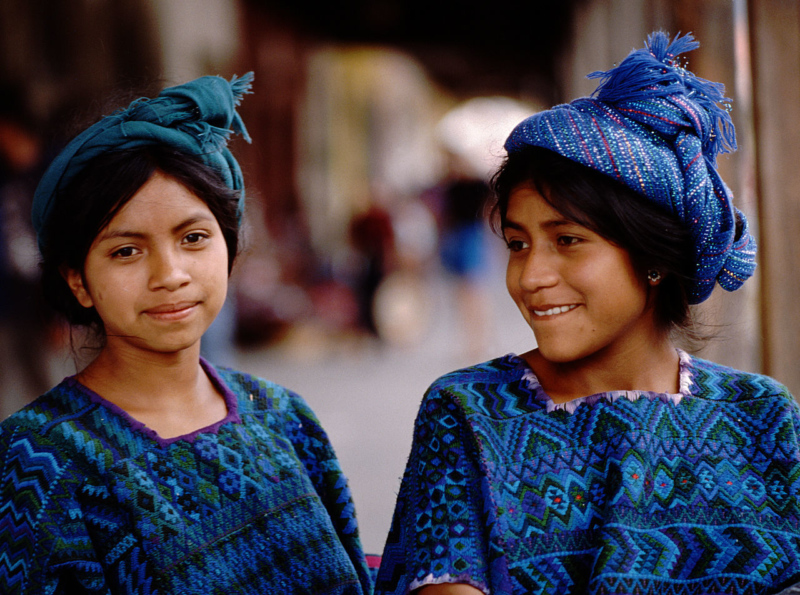Protecting Latin America’s Poor During Economic Crises
History tells us that economic crises cause large increases in poverty. The most recent economic crisis will cause Latin America’s GDP to contract around 2 percent in 2009.
Guatemala is among the most unequal countries in Latin America. It also has the highest incidence of poverty, especially for the indigenous population. In this paper we do a fiscal incidence analysis using the 2009–10 household survey ENIGFAM. The results show that fiscal policy does very little to reduce inequality and poverty overall and along ethnic lines. Persistently low tax revenues are the main limiting factor. Even worse, tax revenues are not only low but also regressive and burdensome on the poor. Consumption taxes are high enough to offset the benefits of cash transfers: poverty after taxes and cash transfers is higher than market income poverty.
Guatemala is a lower middle-income country with one of the most unequal distributions of income and one of the highest poverty rates in Latin America. In 2011, while the (unweighted) average Gini coefficient for Latin America was 0.487, the Gini for Guatemala was equal to 0.522. Although over the last two decades poverty has declined, the pace was slow. Moreover, since the mid-2000s, poverty rose: in 2011, the headcount ratio was 40.7%, up from 33.4% in 2006. According to UNDP, the Human Development Index in 2013 (0.628) was far below the Latin American and Caribbean average (0.74) and only above those of Haiti, Honduras, and Nicaragua. Guatemala had the lowest level in the Human Opportunity Index from a sample of 19 countries in Latin America. Sahn and Younger found that Guatemala had the most unequal distribution of education and health of a sample of six Latin American countries.
Poverty and low levels of human development are highly correlated with ethnicity: the indigenous population is much poorer and has much lower levels of human development than the nonindigenous group. With an incidence of poverty of 58.6%, an indigenous individual is more than twice as likely of being poor than a nonindigenous one. Although the indigenous population represents around 40% of the total population, 60% of the extreme poor are indigenous. Poor Guatemalan families are predominantly indigenous and have experienced centuries of exploitation and exclusion, with weak influence over local and national decision-making. The poverty gap between indigenous and nonindigenous individuals is highly correlated with the disparities in educational attainment by ethnicity.
The profound ethnic divide was a fundamental cause of a long and protracted civil war that plagued Guatemala for 36 years. In 1996 – after more than 200,000 deaths and “disappearances” and more than half a million displaced individuals – the Guatemalan Peace Accords were signed. The Peace Accords committed the country to raise the tax burden by 50% – that is, to reach 13.2 of GDP – during 1996–2002, and to gradually increase the tax burden further subsequently. Twenty years later, not even the initial goal has been reached. In spite of the repeated attempts to introduce revenue raising tax reforms, the tax burden continues to be one of the lowest in Latin America. While in Latin America the average tax burden (including social security contributions) was around 24.7% in 2013, in Guatemala it was only 13.0%. In particular, personal income taxes were a meager 0.4% of GDP in Guatemala while the average for Latin America equaled 2.5% in 2013.
Fiscal policy in Guatemala has been mainly concerned with macroeconomic stability: fiscal deficits and public indebtedness have been relatively and consistently low (about 2.5% of GDP and around 24 of GDP from 2010 to 2014, respectively, according to data of Ministry of Finance of Guatemala). Social equity concerns, however, have fallen between the cracks. While there have been occasional attempts to expand social spending to benefit the most disadvantaged groups – i.e., the rural and indigenous population, resources devoted to this end remain low. Social spending (including contributory pensions) is around 7.4 of GDP in Guatemala – one of the lowest in Latin America. With such low levels of social spending and a high reliance on indirect taxes, tax-based redistribution in Guatemala is bound to be limited.
Commitment to Equity (CEQ) is a joint initiative of the Inter-American Dialogue and Tulane University's Center for Inter-American Policy and Department of Economics. CEQ evaluates and informs governments about how their fiscal policies affect their equity goals and recommends measures to enhance transparency.This study forms part of the CEQ project and has been partially funded by the Gender and Diversity Division of the Inter-American Development Bank.
History tells us that economic crises cause large increases in poverty. The most recent economic crisis will cause Latin America’s GDP to contract around 2 percent in 2009.
Haiti represents one of the most complex and deeply rooted challenges facing U.S. foreign policy in the Western Hemisphere: a failing state on the doorstep of the world’s most powerful nation.
Since achieving independence in 1804 to become the world’s first free black state, Haiti has been beset by turbulent, often violent, politics and a gradual but seemingly unstoppable slide from austerity to poverty to misery.
 Jamie Marshall / Guatemalan Maya Centre (UK) / CC BY-SA 2.0 DE
Jamie Marshall / Guatemalan Maya Centre (UK) / CC BY-SA 2.0 DE